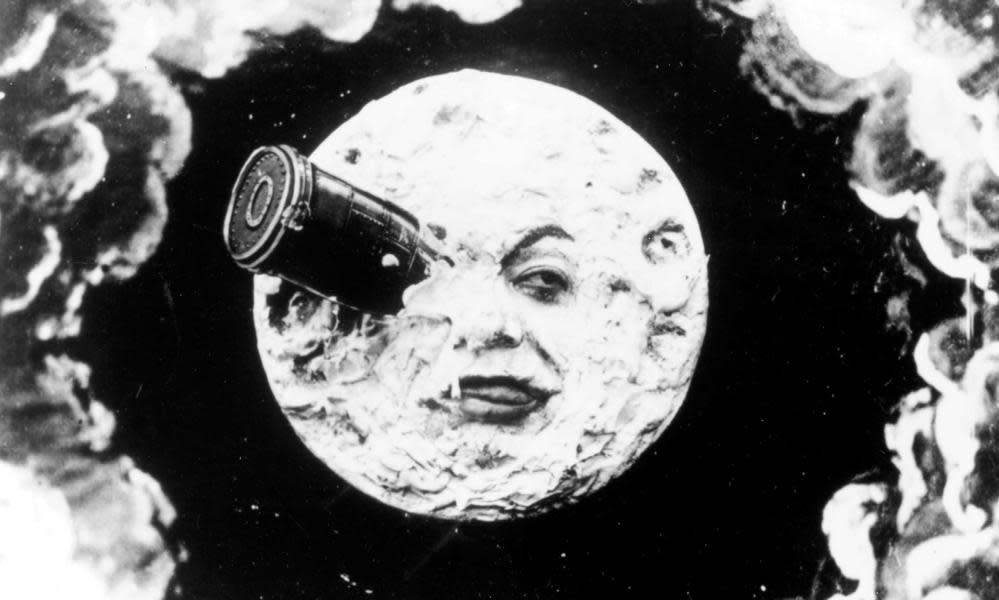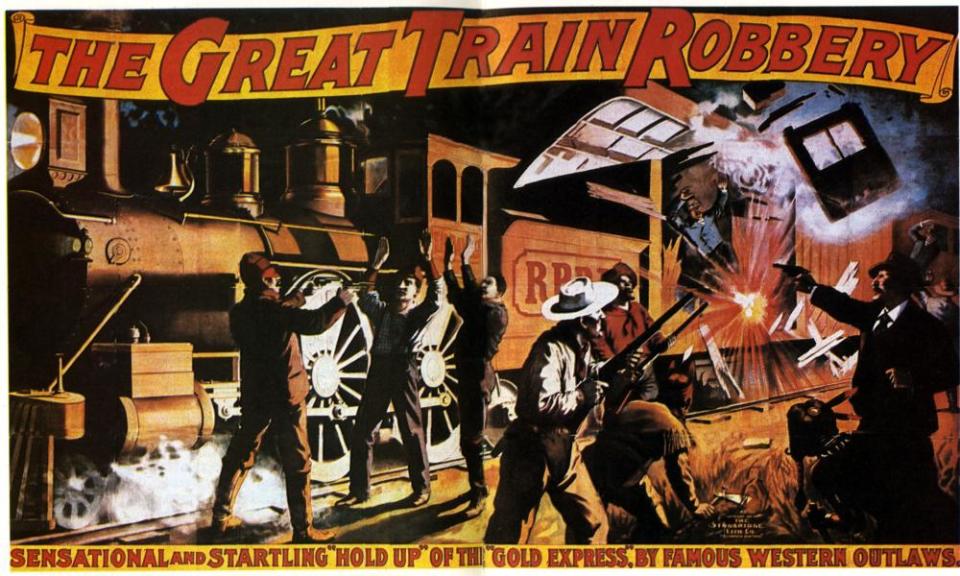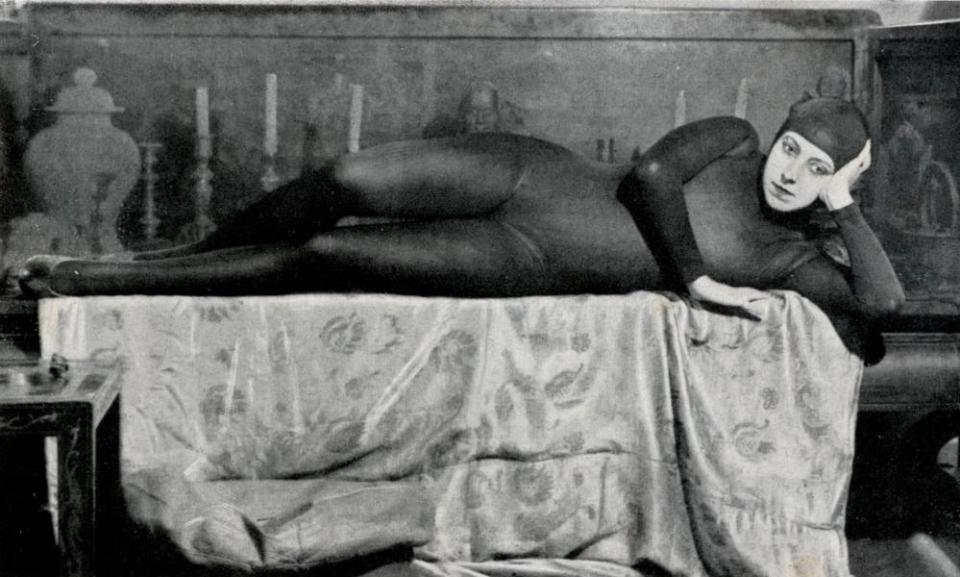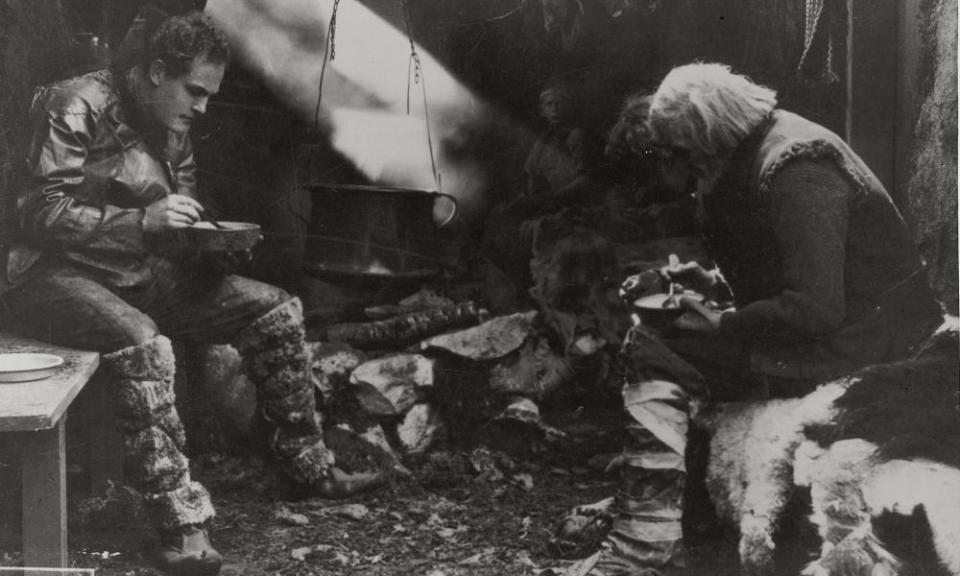Technical wizardry and giddy thrills: 10 of the best films more than a century old

A Trip to the Moon
(1902)
Plucky French scientists travel to the moon and back, meeting its strange, hostile inhabitants. This is an important film, stretching a narrative over 14 minutes, rather than the then-standard two. But it’s also a lot of fun, and contains perhaps the most famous image in all silent cinema, as the man in the moon gets a rocket in the eye.
The Peasants’ Lot
(1912)
In pre-revolutionary Russia, a destitute peasant girl is pushed into the hands of a manipulative “city man”. The Peasants’ Lot is about modernity – the pull of the city and the acceleration, and accelerating immorality, of life there. But it’s also about the world before the modern, the rustic old Russia about to be left behind.

The Great Train Robbery
(1903)
Another classic film and another classic shot, this time featuring a cowboy unloading his revolver into the camera while looking down the lens at us, the audience. The shot could be played either at the beginning or the end of the film, with no effect on the story – the point is the giddy, guilty thrill.
Related: The Guide: Staying In – sign up for our home entertainment tips
Newcastle United v Liverpool
(1901)
Very early cinema was half documentary, half blockbuster, with film screenings mixing recordings of newsworthy events and escapist narratives. Newcastle United v Liverpool, a grainy capturing of a classic fixture, has a bit of both. It offers up the then-revolutionary thrill of pictures in motion: players clattering and hoofing the ball.
The Sinking of the Lusitania
(1918)
The sinking of the RMS Lusitania is recreated in black-and-white animation. Director Winsor McCay had previously dealt with dinosaurs and dragons; here rendered 3D-style naval movements are counter-balanced with flat, silhouetted compositions; thriller and tragedy competing.
A Trip Down Market Street
(1906)
One long tracking shot, showing San Francisco just four days before it was largely demolished by an earthquake. It’s staged but, still, this is a remarkably immersive stroll through a world otherwise lost to the past. Welcome to Edwardian California: all top hats and moustaches, and trams rumbling over dusty, cobbled streets.

Les Vampires
(1915-16)
A police chief has been beheaded by the very gang he was investigating: the mysterious, cat-suited “Vampires”. Thus begins seven hours of creepy French mystery, hunting gangs across labyrinthine mid-war Paris. The film’s power is in its capacity to tell a narrative story – reel after reel of it – visually. Alfred Hitchcock and Fritz Lang were taking notes.
Intolerance
(1916)
The Birth of a Nation the year before was arguably more cinematically inventive, but try sitting through all its appalling racism. This was meant to be director DW Griffith’s response to criticism of that film; it attempted to cram four stories of disastrous “intolerance” into three and a half hours, hurtling from ancient Babylon to the present day, by way of inventive zoom-ins, pull-backs and closeups.

The Outlaw and His Wife
(1918)
A 19th-century love story with a social conscience, as a desperate bread thief in Iceland runs away to the wild. The natural imagery, full of monochrome monoliths foreshadowing the photography of Ansel Adams, is extraordinary. Director Victor Sjöström was about to become a Swedish icon, and an influence on Bergman.
J’Accuse
(1919)
Two men in love with the same woman end up serving together in the first world war. It sounds like a screwball comedy, but it’s really, really not. At the western front, French director Abel Glance recreates the horror of war with technically dazzling effectiveness. Approaching the 1920s, film was only just getting started.


